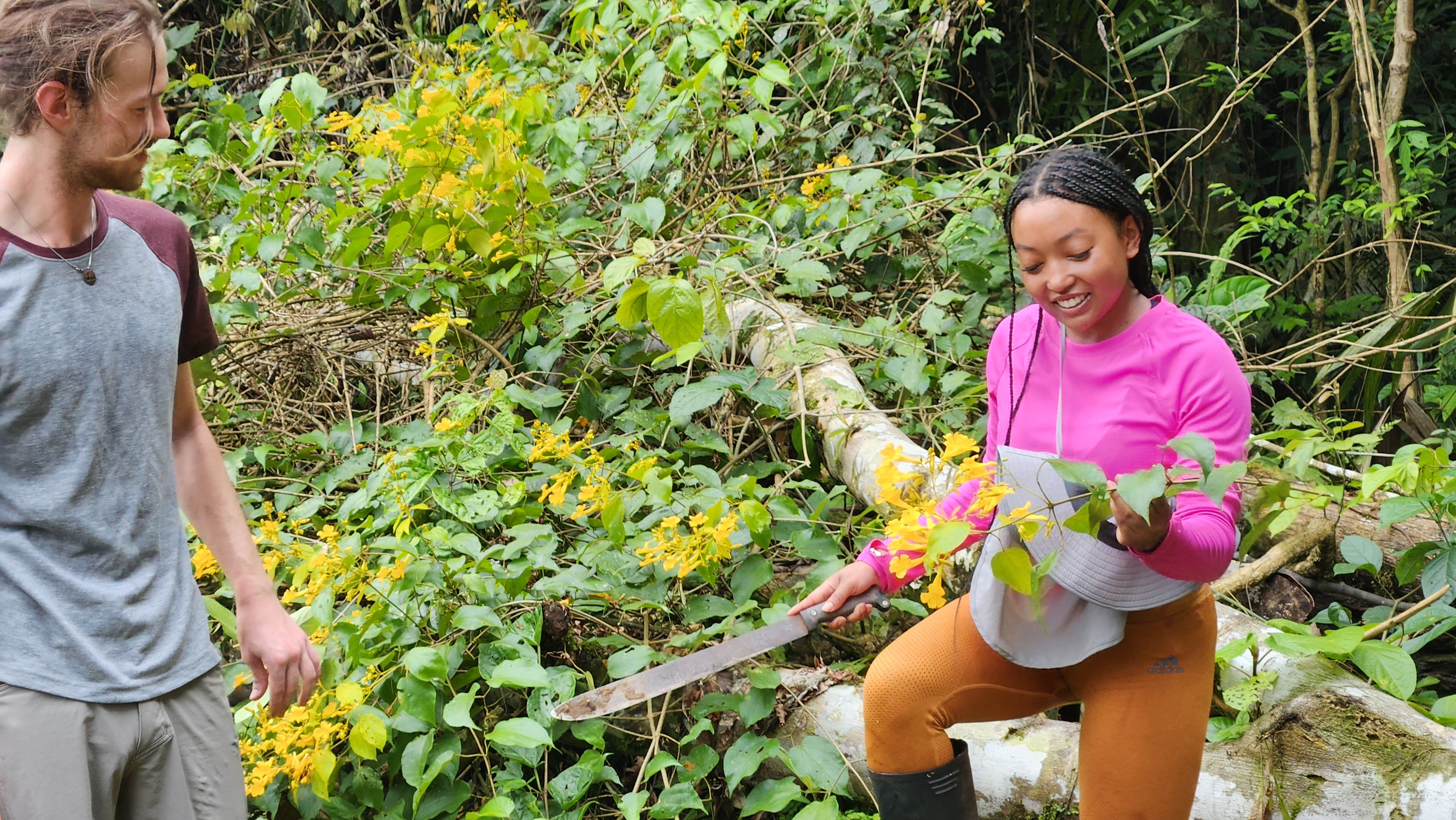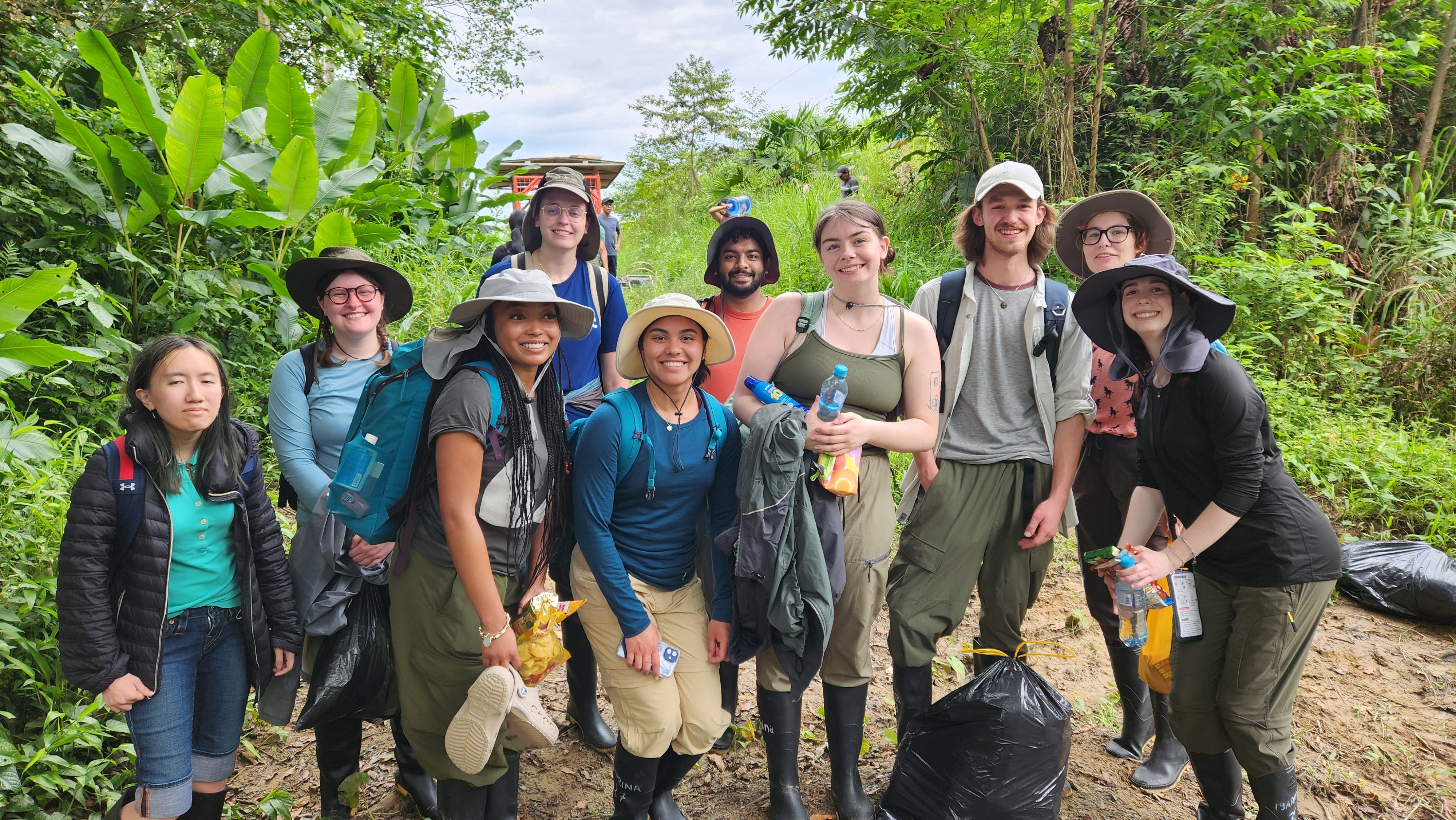When I heard about the project—since named HeritageRoots—and its goal of collecting and compiling indigenous narratives into a virtual experience, I was intrigued by its ambition. As a writing major, I saw the opportunity to study and adapt indigenous traditional knowledge as not only important work for cultural preservation, but a fascinating source of new knowledge to inform my own cultural understanding and writing.
As a result, I spent my Spring Break in the Amazon rainforest, doing my level best to remain focused on work amidst the most gorgeous scenery that I have ever experienced. We were introduced to the director of the program at the Amazon and Andes Field School, Tod Swanson, as well as his daughter Elizabeth and the other members of their family, who served as our primary guides and instructors regarding the objects and narratives which we were studying and scanning.

Before dinner on our first night at Iyarina, Elizabeth showed my classmates and I down to the beach. The river was running high, and most of it was covered. Pointing across the river, Ellie told us about the mining operations which seriously threaten indigenous land along the Amazon. She indicated an enormous gouge in the far rocky shore and told us about a mining group which had come years previously to gut the land, one which they had thankfully been able to clear off. She encouraged us to remember this threat to not only our surroundings but the way of life of every person that we met and came to know over the next week.
The very first thing that Dr. Swanson needed the narrative team to know was that one cannot simply go up to one of the elders and ask for a story, they won’t have anything for you. Instead, stories come naturally as recollections when in the presence of a being whose story is known. In other words, stories come from life. For instance, on our first day of work, as my classmates set to scanning pottery and conducting 360-degree photography of the area, I sat in on a recording session with Elodia and Belgica—two of the women whose stories were being collected. Having been outside and come across the Wanduk flower, Elodia and Belgica were reminded of the story of the Wanduk Woman and her husband, the Caterpillar which fed on her. After Elodia told this story, Belgica told us about her experience taking medicine brewed from Wanduk. This narrative and the plant that triggered it have since served as the basis for one of our interactive scenes.
The next day, we packed into a bus and traveled to a launching point on the Rio Nushino, from which we boarded motorized canoes and traveled for seven hours downriver to Guayapère. Though long, the trip was absolutely stunning, and it was hard to complain when I remembered that the man piloting my canoe had made the seven-hour trip up to us earlier that morning. My group’s canoe arrived last, just in time for sunset, and I was not prepared for how quickly and heavily dark fell at nighttime. The generator was not running right away, so our class got into their swimsuits and climbed into the Rio Nushino to bathe in the shallows.
The next three days that we stayed in the rainforest were spent traveling between Guayapère and the family’s Waorani relatives, who lived in a village only two minutes away by canoe. When we first met the Waorani family, we all gathered and introduced ourselves, then they named us in Wao. I was named Kawiya after a bird with a plume on its head. This made sense, after all, I was the one who’d worn a bandana. Much of the work done at the village was done behind cameras, taking reference photos and drone footage of the area and objects such as their hunting blowgun and traditional housing structures. When half of our class traveled into the forest to harvest chonta fruit with some of the Waorani and Kichwa family, those of us who stayed behind were challenged to a furious game of soccer during which I was scored on three times by a twelve-year-old.

At Guayapère, we primarily collected plant specimens for scanning. On our final day, we traveled directly to the chacra (a natural garden where food and other varieties of flora are nurtured) several hundred yards into the forest itself. Dr. Swanson, in one of his lectures, had emphasized that the Kichwa and Waorani people were accustomed to living alongside constant and extremely varied life. Walking into the rainforest itself, even as shallowly as we went, put into perspective for me the scale of that statement. As we walked, Elizabeth’s cousin Klever told me the names for the thorny trees around us (kashayura), the story of the Spiteful Termite Man, and told me more about the issue of extractivist companies coming to plumb the rainforest for its natural resources.
The night before our return to Iyarina, we took a canoe to the Waorani village under the stars. At the longhouse, they threw a party where we sang and danced with them--although, after their lively songs and dances, our soulful rendition of “Sweet Caroline” may not have cut it. After watching our class try valiantly to find a song that we all knew the lyrics to, they took pity on us and put “Stayin’ Alive” on the speakers.
The respect for and coexistence with the land that I saw in the Kichwa and Waorani people was inspiring. I think that there is enormous value in the telling and understanding of the traditional knowledge collected for the HeritageRoots project and the upholding of the oral tradition in new and creative ways.
